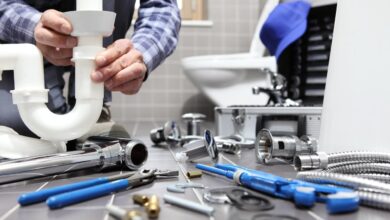A Comprehensive Guide to Heat Pump Installation

Heat pumps have become a popular choice for homeowners seeking efficient and environmentally friendly heating and cooling solutions. Unlike traditional HVAC systems, heat pumps transfer heat rather than generating it, making them more energy-efficient and versatile. This article provides a comprehensive guide to heat pump installation, covering the benefits, types, preparation, and key steps involved.
Benefits of Heat Pumps
- Energy Efficiency: Heat pumps use electricity to transfer heat from one place to another, making them significantly more energy-efficient than traditional heating and cooling systems.
- Cost Savings: The efficiency of heat pumps can lead to substantial savings on energy bills. Though the initial installation cost might be higher, the long-term savings are considerable.
- Environmentally Friendly: By relying on heat transfer rather than burning fossil fuels, heat pumps reduce greenhouse gas emissions and have a lower environmental impact.
- Dual Functionality: Heat pumps provide both heating and cooling, eliminating the need for separate systems for different seasons.
Types of Heat Pumps
- Air Source Heat Pumps (ASHP): These pumps transfer heat between your house and the outside air. They are the most common type and are suitable for moderate climates.
- Ground Source Heat Pumps (GSHP): Also known as geothermal heat pumps, these systems transfer heat between your house and the ground. They are highly efficient but more expensive to install.
- Water Source Heat Pumps: These pumps transfer heat between your house and a nearby water source. They are efficient but require proximity to a suitable water source.
Preparation for Installation
Before installing a heat pump, several preparatory steps are necessary:
- Assessment: Conduct an energy assessment to determine the appropriate size and type of heat pump for your home. Factors to consider include the size of your home, insulation quality, and local climate.
- Permits and Regulations: Check local building codes and obtain any necessary permits. Some regions have specific regulations regarding heat pump installation.
- Choosing a Contractor: Select a qualified and experienced contractor. Look for certifications such as NATE (North American Technician Excellence) to ensure quality workmanship.
Key Steps in Heat Pump Installation
- Site Preparation: Clear the installation area of any debris and ensure proper drainage. For ground source heat pumps, this step may involve excavating land for the ground loop system.
- Mounting the Outdoor Unit: The outdoor unit should be installed on a stable base, such as a concrete pad or wall bracket. It should be placed away from obstructions to ensure adequate airflow.
- Installing the Indoor Unit: The indoor unit, typically an air handler or furnace, should be installed in a location that allows for efficient distribution of air throughout the home. This may involve connecting to existing ductwork.
- Connecting Refrigerant Lines: The refrigerant lines connect the indoor and outdoor units. These lines must be properly insulated to prevent energy loss.
- Electrical Connections: The heat pump system must be connected to the home’s electrical system. This step should be performed by a licensed electrician to ensure safety and compliance with local codes.
- System Testing: Once installed, the system should be tested to ensure it is functioning correctly. This includes checking the refrigerant levels, airflow, and thermostat operation.
- Final Inspection and Calibration: Conduct a final inspection to ensure all components are properly installed and calibrated. Adjust settings as necessary to optimize performance.
Read also: Effective Strategies for Dealing with Water Damage in Your Home
Post-Installation Considerations
- Regular Maintenance: Schedule regular maintenance to keep the system running efficiently. This includes cleaning or replacing filters, inspecting ductwork, and checking refrigerant levels.
- Energy Monitoring: Monitor energy usage to track the system’s efficiency and identify any potential issues early.
- Warranty and Support: Understand the warranty terms and keep in touch with your contractor for any post-installation support or troubleshooting.
Conclusion
Installing a heat pump is a wise investment that offers significant energy savings and environmental benefits. By understanding the types of heat pumps, preparing adequately, and following the key installation steps, homeowners can ensure a smooth and successful installation process. Regular maintenance and monitoring will help maximize the system’s lifespan and efficiency, providing comfortable and cost-effective heating and cooling for years to come.




